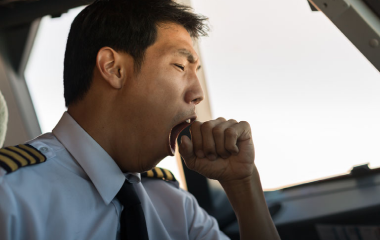Shortly after 6 a.m. on August 27, 2006, 49 people were killed when a Delta Connection flight skidded off the end of a Fayette County, Kentucky runway on takeoff. The commuter plane was on the wrong runway – one too short for the plane.
Only one man was on watch in the control room when it happened. He failed to notice the plane until it was too late. He was wrapping up an overnight shift after logging only two or three hours of sleep the prior afternoon. He had 10 hours between shifts, but couldn’t sleep because of his sleep cycle. Prior to the deadly crash, the controller had worked two evening shifts, two daytime shifts, and a full overnight shift.
A group of sleep researchers at Washington State University say the disaster could have been easily prevented. The researchers estimate the air traffic controller was only operating at 71 percent effectiveness because he was fatigued and fighting his circadian rhythms.
A more flexible, sleep-friendly schedule would have helped the controller work at maximum efficiency. AASM member Gregory Belenky suggests airports switch from rule-based staffing schedules to more flexible schedules. The shifts would be based on how much sleep people can actually attain, rather than hours set aside for sleep.
The concept is one step further than the regulation the FAA proposed last year after the fatal 2009 commuter plane crash near Buffalo. Under the proposal, airlines would have to take into consideration the time of day, time zone and circadian rhythms when scheduling shifts. Pilots’ unions strongly opposed the changes, claiming the policy would have a negative impact on safety.
The blame in the 2006 crash can’t be completely pinned on the lone air traffic controller. The pilot and crew were also fatigued from shift work.
Once again, fatigue proves to be of serious concern to public health. Shift work is necessary in our non-stop 24-hour society, but it doesn’t have to be harmful for workers and the public at large. Employee wellness efforts and shift work awareness can go a long way.





